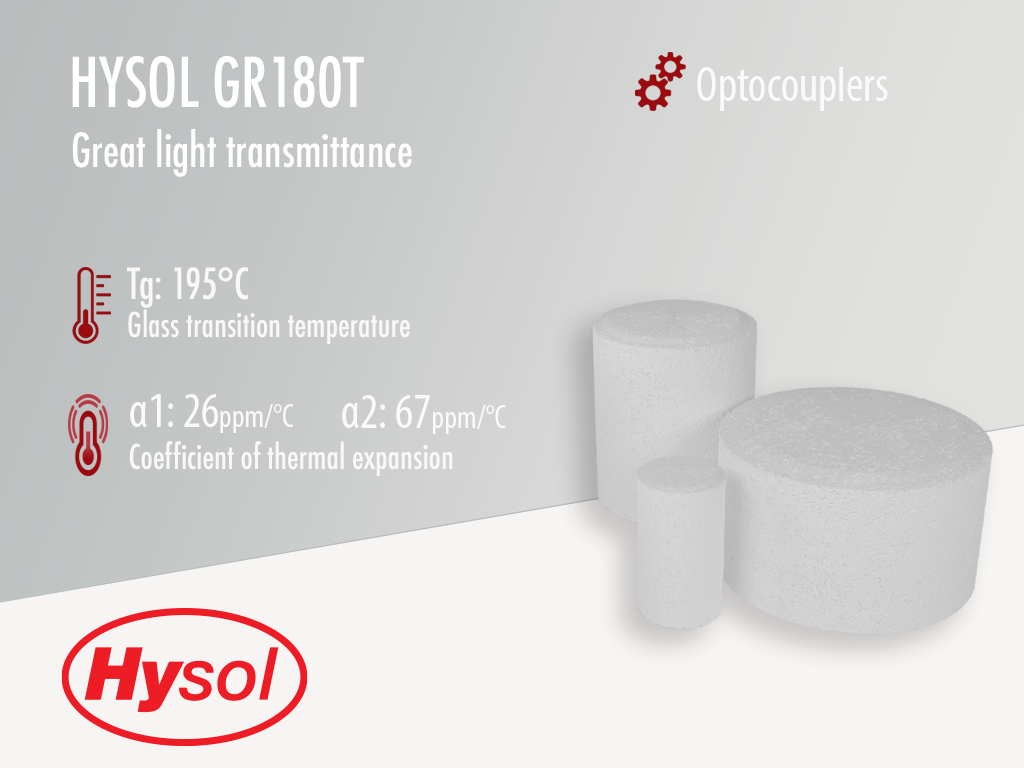Hysol GR180T | White Epoxy Mold Compound
- Transmitting compound
- High reliability
- Good workability
Product Description
Hysol GR180T is a white, transmitting epoxy molding compound used for optical applications. This crystal silica filled (70%) product has been specifically designed to improve light transmittance and workability for optocouplers also knows as photo-couplers, optical isolators, or opto-isolators.
Hysol GR180T cures with heat and has been developed to be workable for transfer molding processes. It has been formulated to provide the best possible moldability for a wide range of molding process parameters.
Technical Specifications
| General Properties | |||||||||
| Color Color The color | White | ||||||||
| Filler Content | 70 % | ||||||||
| Specific Gravity Specific Gravity Specific gravity (SG) is the ratio of the density of a substance to the density of a reference substance; equivalently, it is the ratio of the mass of a substance to the mass of a reference substance for the same given volume. For liquids, the reference substance is almost always water (1), while for gases, it is air (1.18) at room temperature. Specific gravity is unitless. | 1.85 | ||||||||
| |||||||||
| Chemical Properties | |||||||||
| Moisture absorption | 0.67 % | ||||||||
| Physical Properties | |||||||||
| Spiral Flow @ 175°C | 73 cm | ||||||||
| Thermal Properties | |||||||||
| Glass Transition Temperature (Tg) Glass Transition Temperature (Tg) The glass transition temperature for organic adhesives is a temperature region where the polymers change from glassy and brittle to soft and rubbery. Increasing the temperature further continues the softening process as the viscosity drops too. Temperatures between the glass transition temperature and below the decomposition point of the adhesive are the best region for bonding. The glass-transition temperature Tg of a material characterizes the range of temperatures over which this glass transition occurs. | 195 °C | ||||||||
| |||||||||
| |||||||||
| Mechanical Properties | |||||||||
| |||||||||
| |||||||||
| |||||||||
| Curing Conditions | |||||||||
| Transfer Pressure | 40 - 85 kg/cm2 | ||||||||
| Transfer Time | 5 - 12 s | ||||||||
| |||||||||
| |||||||||
Additional Information
Storage
Store product in the unopened container in a dry location. Storage information may be indicated on the product container labeling.
Optimal Storage: 5°C or below, in closed containers. After removal from cold storage, the material MUST be allowed to come to room temperature, in the sealed container, to avoid moisture contamination. The suggested waiting time for a standard 15 kg carton box is 24 hours.




